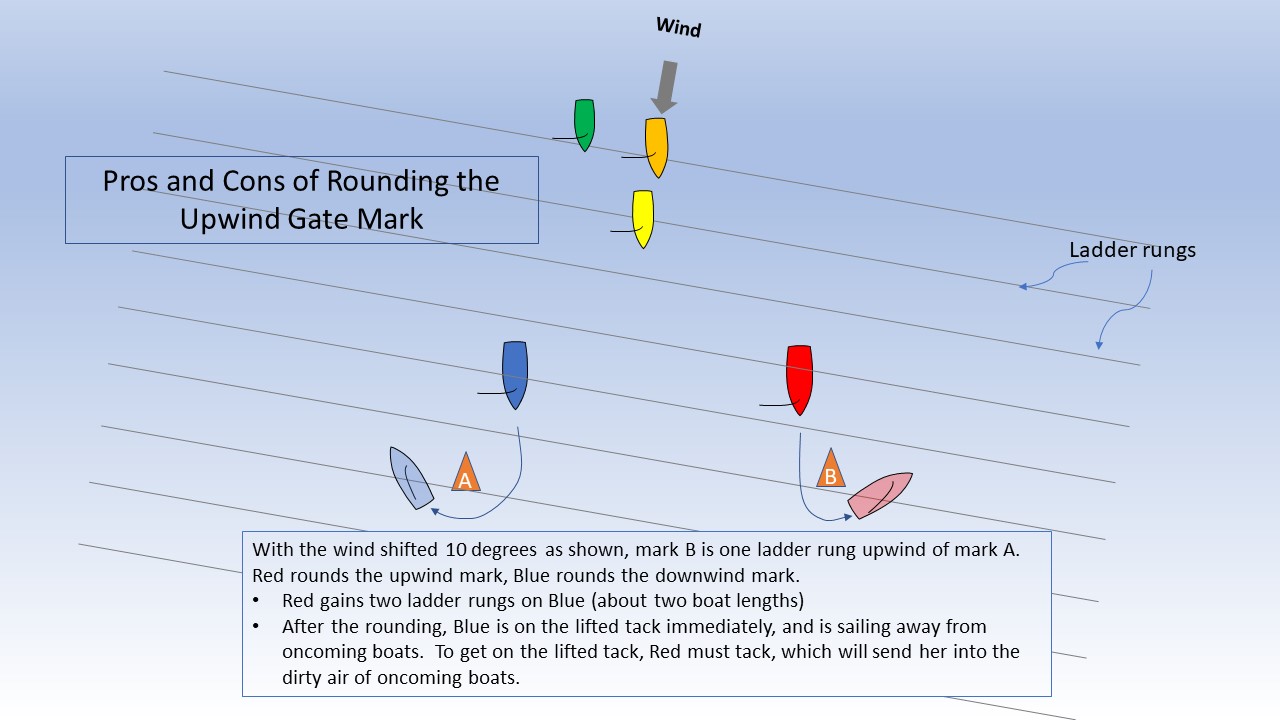Are you losing ground or making costly mistakes at leeward mark roundings? Like any high stakes, stressful task, it helps to be prepared. In this post, we’ve compiled a leeward mark preparation checklist to help you consider everything.
Plan the Next Beat
Halfway down the run, start planning the next beat strategy. Use the following inputs:
- Previous beat – what worked, what didn’t
- Wind direction now
- Wind behind you – direction and velocity
- Boats behind you – heading, jibe (port/starboard), speed
- Water – dark areas and their movement
- Flags, smoke, trees
- Windward mark changes signaled by the race committee
- Competitors to cover or catch
- Waves and wave set
Select the Gate
Last third of the run, start selecting the gate mark. Here are four factors to consider.
- Favored side of course. Round the the mark closest to the favored side of the course. This factor ranks #1 if there is a strong favor to one side of the course.
- Upwind mark. Round the upwind mark to shorten your course by double the upwind distance. This factor ranks #1 if one mark is significantly upwind of the other. See the drawing below.
- Traffic at the mark. Round the mark with less traffic for clear air and freedom to tack. This factor ranks #1 if traffic is a concern and the first two factors are not strong.
- Lifted tack and clear air after rounding. Round the downwind mark to get on the lifted tack immediately, on a course that avoids the dirty air of the oncoming fleet. This sometimes works brilliantly when the first two factors are not strong and there is less traffic at the downwind mark. See the drawing below.
Position the Boat
Last quarter of the run, start positioning your boat. Here are four key goals.
- Inside nearby boats to preserve room at the mark
- Starboard tack to maximize your flexibility
- Clear air – avoid the cone of death! See our post on Downwind Tactics with Roble/Shea sailing.
- Ready to go behind boats if no overlap established
Re-evaluate your Plans
Last 100-200 yards, run through the previous items and re-evaluate your plans. Look for things that may have changed:
- New wind or lull
- Wind shift
- Boats behind jibing
- Traffic pattern at mark
- Competitors heading to a different gate
Prepare the Boat and Crew
Before the three boat length circle, get the boat and crew ready to round and sail fast upwind.
- Talk to nearby boats about room and right of way
- Clear weeds from foils
- Position boards
- Adjust sail controls (vang, traveler, cunningham, outhaul, jib leads)
- Mainsheet free and ready to sheet in
- Feet in straps, ready to hike
- Spinnaker, jib
Related Content:
Leeward Mark Rounding Paths – Strategic or Tactical Rounding?
Leeward Mark Roundings – Principles and C-Scow Examples
Ullman Sails Scuttlebutt Article – Choose the Correct Mark
Leeward Gate Tactics: 8 Tactical IQ Scenarios – SailZing
Sailors Helping Sailors
Will you share your knowledge with your related Comments below?






